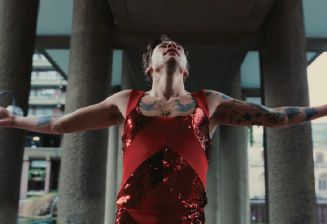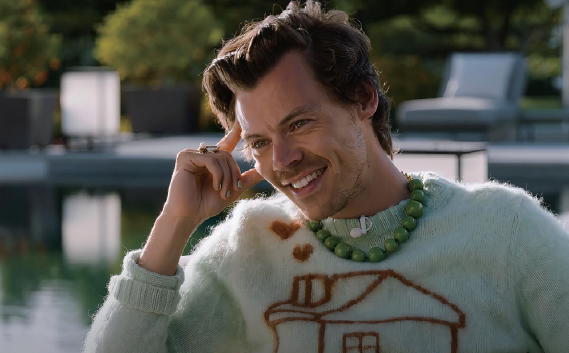Following his 2023 Grammy Award win of Album of the Year, an artist rose closer to the center of global pop stardom. After three years of waiting, he unlocked the door into his more vulnerable side with a new sound and performance on his most recent Love On tour. For those looking for a promise of hope steeped in slick synth-pop and R&B, the Sungkyun Times (SKT) welcomes you to Harry Styles’ Harry’s House.
We Got a Whole Lot of History
Released on May 20th, 2022, Harry’s House is the third studio album of English singer-songwriter Harry Styles. Four of the 13 songs of the album have placed in the top 10 of the Billboard Hot 100 charts. These top tracks placed Styles next to The Beatles, who also achieved the feat in 1964. The musical success of Harry’s House was further proven by Styles winning the Album of the Year in three major music award shows. Since the release of his second album Fine Line, Styles featured his innermost thoughts with a new ’70s and ’80s synth sound. This musical growth from the previous progressive pop and funk genres showcased a more personal view of his life. Described by Styles as a “day in a life in my house, in my mind,” the album invites his listeners to an incredibly intimate yet relatable point of view.
Lights Up in Harry's House
Opening the doors to Harry’s House is much easier once you unlock its deeper meaning. Styles explained that this album encompasses his journey to find his home. Rather than reflecting a geographical location, the song depicts his internal search and the meaning of the word home. Through this album, Styles expresses how he overcame his fear of change and grew to appreciate it. This painful yet satisfying search for his home is displayed through the lyrics, delightfully blanketed by an eccentric melody. The bittersweet journey of self-reflective awareness is perfectly encapsulated in his music, creating a safe and sound space for his listeners to do the same.
Leaving and Growing up
While listening to the entire album from the beginning to the end is recommended, two songs are especially crucial to understanding Harry’s House.
“In this world, it’s just us / You know it’s not the same as it was,”
The first song is the deceptively upbeat single, As It Was. In As It Was, Styles’ soft voice against the brisk synths paints a picture of a devastating reflection of metamorphosis. Everyone changes over time, but looking back to see how much you have changed is always a surprise. Now, as Styles sings, nothing will ever be as it was.
“You don’t have to be sorry for leavin’ and growin’ up"
The next song Matilda is an ode to the concept of home— a song about love, a longing to belong, and chosen families. Matilda is one of Styles’ most intimate songs, centered around a girl named Matilda, whom the songs’ lyrics suggest grew up in a troubled or abusive household. This song was made as a tribute to Styles’ close friend, so rather than giving bits of advice, the track sits with its listeners and hears their stories. Within its lyrics, anyone can feel heard. Such sincere and honest support from Matilda broadens the album’s exploration of what and who makes up a home.
Behind Harry's Door

Styles’ message extends through the music video of As It Was, directed by Tauno Muino. The colorful depiction of loneliness and letting go in the video is heavily influenced by the movie The Matrix. In the film, the main character is given a choice between a red pill, which represents painful truth, and a blue pill of blissful ignorance. Likewise, in the music video, Styles exclusively wears red while the female antagonist, who portrays his past self, wears blue. Though he chases his “blue pill” for the entirety of the video, he is left alone by the end. This symbolizes how Styles struggles to face changes and longs to return to his unknowing past self. The concept is further emphasized by his famously green eyes edited to look blue. The desperation for the “blue pill” continues to influence Styles, even after moving on to face reality. Furthermore, the butterfly imagery appears to symbolize Styles’ metamorphosis. In several scenes, a butterfly tattoo on Styles’ chest is revealed, with metal rods pinning him down — a nod to how butterflies are pinned down to be displayed. This imagery could represent how Styles has been observed and appraised by the public since he was young, inhibiting his chance to grasp control of his own life. It is only when the rods are removed that he comes to terms with his own identity. As the music video nears its end, Styles can finally run free from his “blue pill.” Regarding the album, Styles explained that he has never felt more comfortable with himself and happier with his music; this masterful illustration is only a fragment of how much he has mentally grown.

